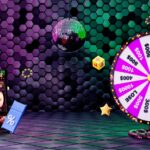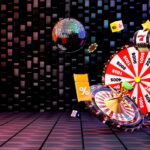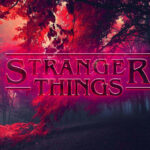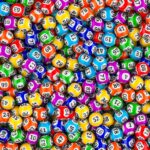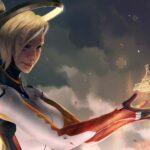Anime has taken the world by storm, captivating millions with its vibrant art and compelling stories. But as I dive deeper into this fascinating realm, I can’t help but notice some trends that raise eyebrows. One such trend is the emergence of “sus” elements in anime, which have sparked conversations among fans and critics alike.
From questionable character motivations to bizarre plot twists, these “sus” moments can leave viewers scratching their heads. I’m excited to explore how these elements shape our viewing experience and what they reveal about the anime community. Whether you’re a seasoned otaku or just starting your journey, understanding these nuances can enhance your appreciation for the medium. Let’s unravel the mystery behind the “sus” in anime together.
Key Takeaways
- Understanding “Sus” Elements: “Sus” moments in anime refer to characters with dubious intentions and unexpected plot twists that challenge viewers’ perceptions, enhancing overall engagement.
- Impact on Character Development: Characters showcasing “sus” traits often undergo significant transformations, prompting deeper discussions about morality and psychology, which enriches audience attachment and intrigue.
- Unpredictable Story Arcs: Anime series that incorporate “sus” elements create thrilling narratives filled with unforeseen twists, encouraging viewers to reassess their predictions and engage in meaningful analysis.
- Visual and Audio Enhancement: High-quality animation and emotive soundtracks play a crucial role in amplifying “sus” themes, drawing audiences into complex storytelling through exceptional craft and immersive audio experiences.
- Audience Engagement and Critique: The reception of “sus” elements stimulates vibrant discussions among fans, leading to diverse interpretations and debates about character relatability, narrative integrity, and the effectiveness of artistic choices.
- Cultural Reflection: The popularity of “sus” moments signifies a broader cultural interest in unconventional storytelling, pushing boundaries and inviting innovative approaches within the anime community.
Anime:Yrvtisaaz50= Sus
Anime:Yrvtisaaz50= Sus illustrates a unique facet of anime that captivates audiences. This trend showcases plotlines where characters display dubious intentions, resulting in unpredictable events that often challenge viewers’ perceptions. Viewers engage deeply with these “sus” elements, discussing motivations behind actions and their implications for character development.
Public conversation often revolves around specific shows that exemplify these traits. Certain series incorporate “sus” moments effectively, leading to intense debates. Fans analyze characters, exploring the complexities and gray areas of morality depicted in various narratives.
This phenomenon reflects a broader cultural interest in storytelling that deviates from conventional norms. Many anime creators utilize unconventional tactics to keep audiences on edge, enhancing overall enjoyment. The impact of “sus” moments resonates not only in storytelling but also in community engagement, fostering discussions that enrich the viewing experience.
Key Themes and Concepts
“Sus” elements are prominent in many anime series, often influencing character interactions and storylines. These themes highlight the shifting dynamics within narratives, fueling engagement and discussion among viewers.
Character Development
Characters often undergo significant transformation through “sus” traits, which challenge conventional morality. I notice that questionable motivations prompt viewers to examine the layers of character psychology. For instance, a character with ambiguous intentions can create conflicting emotions, fostering attachment and intrigue. This complexity enhances relatability and depth, making character arcs more compelling. Additionally, the unexpected nature of these motivations leads to intense fan theories and discussions, as audiences seek to uncover hidden meanings and connections.
Story Arc
“Sus” elements transform traditional story arcs into unpredictable experiences. I observe that plotlines infused with ambiguity captivate viewers, keeping them on edge. Unforeseen twists often drive the narrative forward, compelling viewers to rethink predictions. Shows like Attack on Titan and Death Note exemplify this trend, featuring intricate plots where trust is frequently questioned. These story arcs stimulate conversation and analysis, as fans dissect the implications of each twist, deepening their understanding of the story’s structure and themes. By prioritizing surprise and complexity, anime creators engage audiences in a unique storytelling experience that challenges expectations.
Visual and Audio Aesthetics
Visual and audio elements significantly enhance the anime experience, adding depth to the storytelling and emotional impact. High-quality animation and engaging soundtracks contribute to the allure of “sus” narratives, drawing viewers into complex worlds.
Animation Quality
Animation quality varies widely among anime series, but exceptional craftsmanship often defines standout shows. Fluid motion, vibrant colors, and detailed character designs contribute to the visual storytelling. Productions like Studio Ghibli and Ufotable consistently raise the bar, employing talented animators to create stunning visuals. High frame rates and intricate backgrounds heighten the immersive experience. Well-executed action scenes can elevate tension, effectively amplifying “sus” moments. Notable examples include the choreography in Demon Slayer and Attack on Titan, where animation captivates while reflecting the characters’ inner conflicts and motivations.
Soundtrack and Voice Acting
The right soundtrack enhances emotional resonance and establishes mood throughout anime series. Composers like Yuki Kajiura and Hiroyuki Sawano create iconic scores that complement the narrative’s intensity. Soundtracks often incorporate diverse genres, from orchestral pieces to electronic sounds, enriching the viewing experience. Additionally, voice acting plays a critical role in bringing characters to life. Skilled voice actors convey complex emotions, allowing viewers to connect with characters on a deeper level. Noteworthy performances often become synonymous with iconic characters, enhancing the narrative and adding layers to “sus” elements. Shows like My Hero Academia and Death Note exemplify effective voice acting that underscores the themes and character dynamics.
Audience Reception and Critique
Audience reception of “sus” elements in anime demonstrates varied interpretations and responses. Fans express fascination with the unpredictability that these moments introduce into narratives. Critics, however, sometimes raise concerns about character development and storytelling coherence. The balance between engaging viewers and maintaining plot integrity sparks ongoing debates.
Fans actively analyze character motivations and moral complexities, leading to rich discussions on social media platforms and forums. Shows like Attack on Titan and Death Note ignite passionate conversations due to their intricate plots and unexpected twists. This community engagement fosters a sense of belonging, where fans share theories and interpretations that enhance their viewing experience.
Critique often focuses on how “sus” elements affect narrative pacing and audience connection. Some audiences appreciate the complexity and depth introduced by ambiguous motivations. Others argue that these traits can diminish character relatability, as viewers find it challenging to connect emotionally with morally ambiguous characters. Despite differing views, the conversation around “sus” elements remains vibrant and influential.
The visual and audio aesthetics in relation to “sus” moments also draw attention. High-quality animation captivates viewers, while compelling soundtracks heighten emotional impact. Critics often highlight how these artistic components can enhance or detract from the storytelling experience. Noteworthy examples include the striking visuals in productions by Studio Ghibli and Ufotable, which elevate emotional stakes during critical plot developments.
Ultimately, the dynamic interaction between audience reception and critique shapes the evolution of “sus” elements in anime. This dialogue between creators and viewers pushes boundaries, encouraging anime to explore unconventional storytelling methods while fostering diverse perspectives within the community.
Intense Discussions
The exploration of “sus” elements in anime opens up a fascinating dialogue about storytelling and character complexity. These moments not only keep viewers on their toes but also encourage deeper engagement with the narrative. I find it thrilling how these unpredictable twists challenge our perceptions and spark intense discussions within the community.
As creators continue to push boundaries, the anime landscape will only become more dynamic. The blend of high-quality visuals and intricate soundtracks enhances the experience, making each “sus” moment even more impactful. I can’t wait to see how these trends evolve and what new stories will emerge in the future.








































